50A_Current_Sensor(SKU_SEN0098) - jimaobian/DFRobotWiki GitHub Wiki

Introduction
This is a breakout board for the fully integrated Hall Effect based linear ACS758 current sensor. The sensor gives precise current measurement for both AC and DC signals.The thickness of the copper conductor allows survival of the device at high overcurrent conditions. The ACS758 outputs an analog voltage output signal that varies linearly with sensed current. This current sensor enables you to monitor currents in your project every second for energy saving or circuit protecting purposes.
Specifications
- Operating Voltage(analog): 5V
- Peak Measuring Voltage:3000V(AC),500V(DC)
- Current Measuring Rang:-50~50A
- Sensitivity:40 mV/A
- Operating Temperature: -40~150°C
- Dimension:34x34mm
PinOut
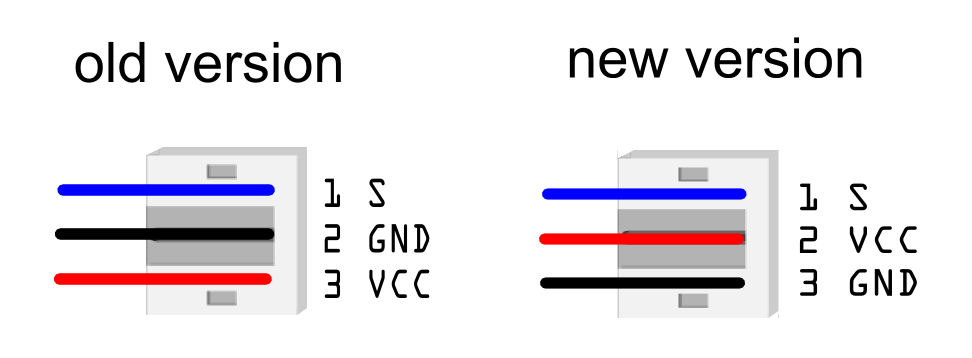
Tutorial
This tutorial is going to test DC and AC current. The result of AC current is its effective value, i.e. the same as an Ammeter reading.
Connection Diagram
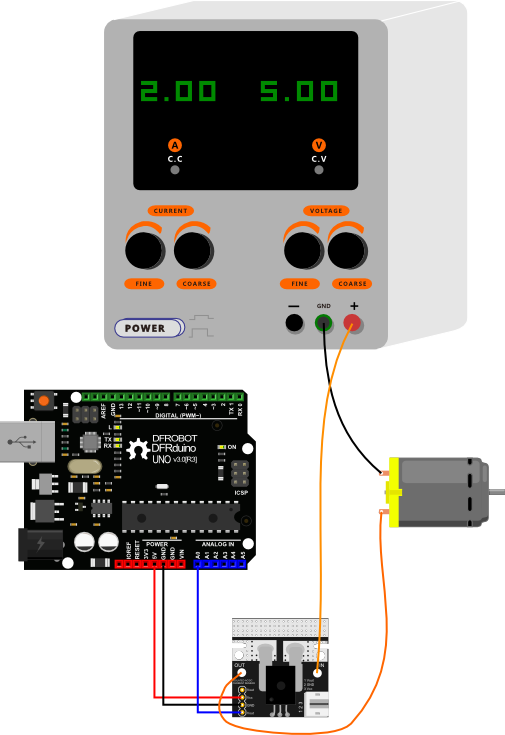 |
 |
| |
|----------------------------------------------------------------------------------------------------------------------------------------------------------------------------------------------------------------------------------------------------------------|
| **DANGER**: This diagram can also be applied to AC current connection. But notice that the module should be **cascaded** on **one** electric wire ( +/- ). But if you connect it to two electric wires in parallel, you will short circuit and lead to danger. | |
DC load
| #### Sketch |
/*
50A Current Sensor(DC)(SKU:SEN0098) Sample Code
This code shows you how to get raw datas from the sensor through Arduino and
convert the raw datas to the value of the current according to the datasheet;
Smoothing algorithm (http://www.arduino.cc/en/Tutorial/Smoothing) is used to
make the outputting current value more reliable;
Created 27 December 2011 @Barry Machine @www.dfrobot.com
*/
const int numReadings = 30;
float readings[numReadings]; // the readings from the analog input
int index = 0; // the index of the current reading
float total = 0; // the running total
float average = 0; // the average
float currentValue = 0;
void setup()
{
Serial.begin(115200);
for (int thisReading = 0; thisReading < numReadings; thisReading++)
readings[thisReading] = 0;
}
void loop()
{
total= total - readings[index];
readings[index] = analogRead(0); //Raw data reading
//Data processing:510-raw data from analogRead when the input is 0;
// 5-5v; the first 0.04-0.04V/A(sensitivity); the second 0.04-offset val;
readings[index] = (readings[index]-512)*5/1024/0.04-0.04;
total= total + readings[index];
index = index + 1;
if (index >= numReadings)
index = 0;
average = total/numReadings; //Smoothing algorithm (http://www.arduino.cc/en/Tutorial/Smoothing)
currentValue= average;
Serial.println(currentValue);
delay(10);
}
| #### Result |
After uploading the sample sketch, open the serial monitor, when the current is 0A, you may found the reading is not 0A, then if you need amore ccurate readings, you have to revise the code with the reading when the input current is 0A.These are the steps:
1 Check the initial current value when the input is 0A;
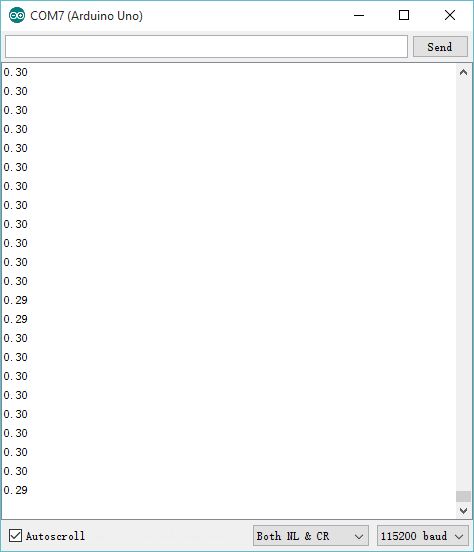
2 Caculate the initial current value:
-0.34 = -0.04 - ( +0.30 );
3 Revise the sample sketch:
readings[index] = (readings[index]-510)*5/1024/0.04-0.34;//
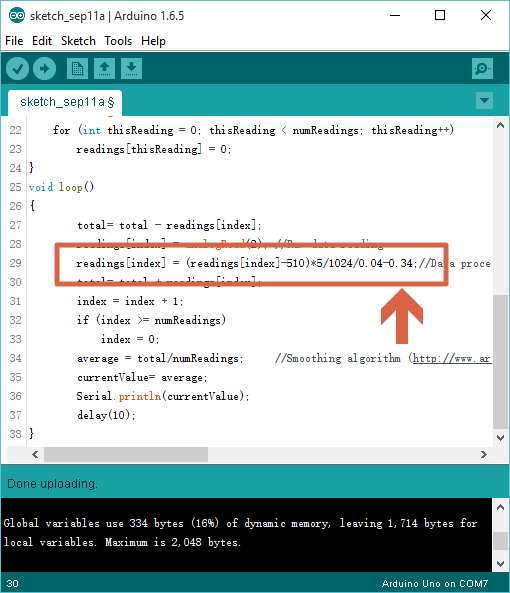
4 Upload your new sketch again, then you will found the readinga are around 0A, if not, please do the steps above several times to make it.
 5 As shown above, it can be applied to detect the current value accurately, and output analog voltage signals.
5 As shown above, it can be applied to detect the current value accurately, and output analog voltage signals.
AC Load
Sketch
float reading = 0;
float currentValue = 0;
void setup(){
Serial.begin(115200);
}
void loop() {
reading = analogRead(*); //Raw data reading
currentValue = (reading - 510) * 5 / 1024 / 0.04 - 0.34;
Serial.println(currentValue);
delay(2);
}
Result of AC current
I tested with a lamp @220V~, and got the result shown below: Read more about the experiment.
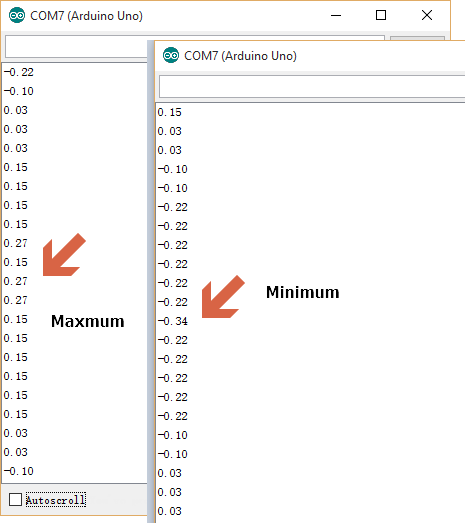
Look at the data, it's a Sine wave data described the effective AC current, and you can read the extreme data which are the maxmum value 0.27 and the minimum value -0.34, use the maxmum absolute one as the ( Effective) AC current.
Trouble Shooting
| '''Q1. '''We see that there are holes to insert sockets, what kind of sockets will fit the holes? |
'''A1. '''An example to test a 40W lamp using this sensor.
 For any question/advice/cool idea to share, please visit DFRobot Forum.
For any question/advice/cool idea to share, please visit DFRobot Forum.
More
ACS758 datasheet
 buy from dfrobot store or dfrobot distributor list
buy from dfrobot store or dfrobot distributor list
category: Product Manual category: SEN Series category: Sensors category: Source category: Diagram